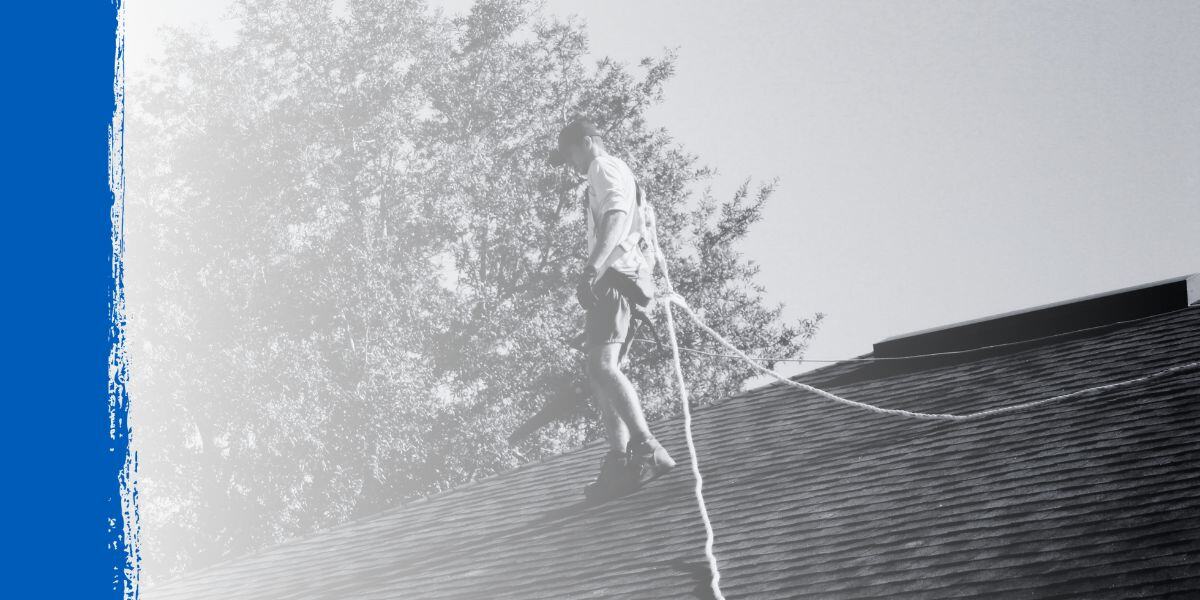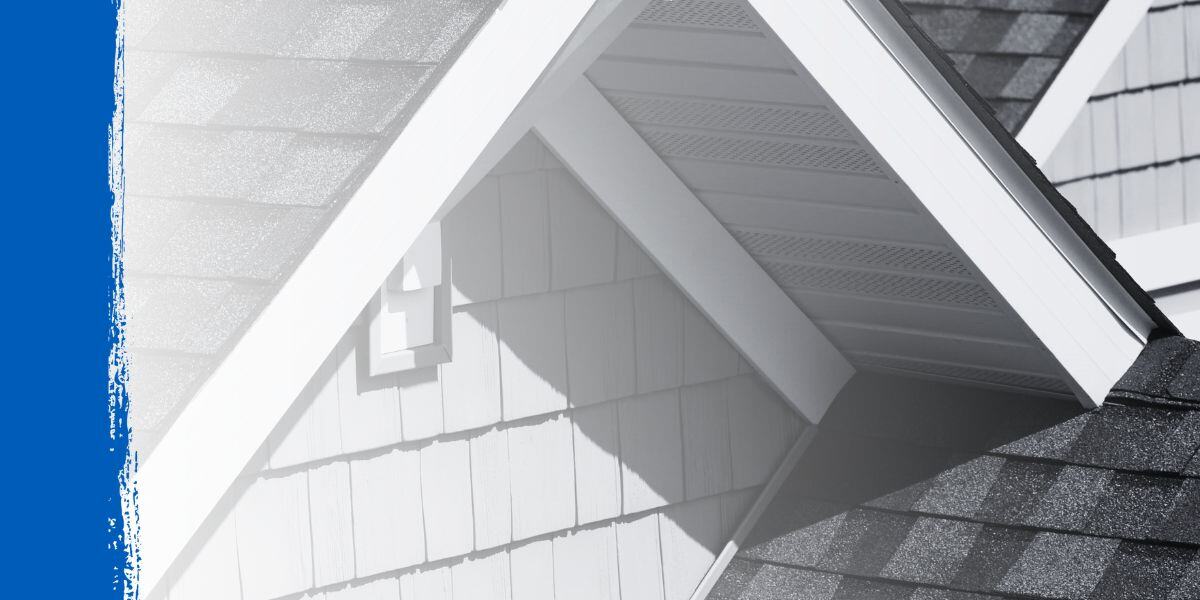The range of available materials can seem overwhelming when roofing a home. Each type of roofing material—be it asphalt shingles, metal, tile, wood, or flat systems—has its own blend of cost, durability, and aesthetic appeal.
How do you decide which is right for you? This article examines each roofing option and the key factors you need to consider, from installation ease to energy efficiency.
Factors to Consider When Choosing Your Roofing Material
A roof's main job is to protect the interior of a building from outdoor elements. There are many ways to do this effectively, involving various materials you might use. As a result, a homeowner or contractor must choose the best selection for their unique circumstances, understanding that each option offers its own set of benefits and tradeoffs.
- Cost: The initial cost of roofing materials and installation ranges from inexpensive options like 3-tab asphalt shingles to more expensive options like metal or composite. Keep in mind that costs vary based on material choice, local labor rates, roof pitch, and installation complexity.
- Lifespan: The lifespan of roofing materials ranges from 15 to 30 years for asphalt shingles to 50 years and more for metal, tile, or slate. Longer-lasting materials reduce the cost and hassle of frequent roof replacements.
- Durability: Roofing materials differ in their resistance to sunlight, rain, wind, hail, fire, and other environmental factors. When selecting a roofing material, consider the weather conditions in your area.
- Ease of installation: Some materials, such as asphalt shingles, are relatively easy to install, while others, like tile or slate, require more specialized skills and equipment. Installation complexity affects both the upfront cost and the availability of qualified contractors.
- Aesthetic appeal: An attractive roof appropriate to the building and sympathetic to its surroundings enhances a house's value. Consider the style and color of roofing material that will best complement your home's architecture and exterior design.
- Energy efficiency: Certain roofing materials, such as metal or tile, reflect sunlight and reduce heat transfer into your home, lowering cooling costs. Other materials, like asphalt shingles, are available with specialized coatings that improve their energy efficiency.
- Maintenance requirements: All roofing materials require maintenance to ensure their longevity and performance. Consider the maintenance needs of each material, such as cleaning, sealing, or repairing, and factor in the associated costs and time commitment.
Understanding Your Roofing Materials Options
Asphalt Shingles
Asphalt shingles are the most popular roofing material in North America, and for good reason. They are affordable, long-lasting, and easy to install. Asphalt shingles come in a variety of styles, from traditional three-tab shingles to premium architectural shingles and luxury shingles that mimic the look of wood or slate.
Asphalt shingle roofs are generally less expensive than other roofing materials, making them a budget-friendly option for many homeowners.
They are also among the most straightforward to install, so they are favored by both professionals and DIY enthusiasts. The installation process typically involves removing the old roofing material, installing an underlayment, and then nailing the shingles in place in an overlapping pattern.
Although maintenance requirements for asphalt shingles are minimal, you should periodically inspect the roof for signs of damage, such as cracked, curled, or missing shingles, and to keep the roof clear of debris.
Asphalt shingles are designed to withstand severe weather conditions, including heavy winds and rain. They are treated with fire-resistant chemicals and can resist algae, moss, and mold growth. With proper maintenance, an asphalt shingle roof can last from 15 to 30 years or more, depending on the type of shingle.
Metal Roofing
Metal roofing has gained popularity in recent years. Various metals, including steel, aluminum, copper, and zinc, are used for roofing. Metal tiles and panels come in many colors and a range of styles, from traditional corrugated panels to a sleek standing seam metal roof.
One of the main benefits of a metal roof is its exceptional resilience. Metal roofs can last 50 years or more with minimal maintenance. They are highly resistant to fire, wind, hail, and other severe weather conditions.
Metal roofs are also energy-efficient. They reflect sunlight and heat away from the building, helping to reduce cooling costs in the summer. Some metal roofing materials are made from recycled content, making them an eco-friendly choice.
Installation can be more complex than asphalt shingles, and it's generally recommended to hire a professional contractor with experience in metal roofing. The installation process usually involves installing an underlayment, securing the metal panels with screws or clips, and properly sealing and flashing all seams and penetrations.
While metal roofing can be more expensive upfront than some other materials, longevity and lifetime energy savings make it a cost-effective choice over the roof's lifetime.
Tile Roofing
Tile roofing is a premium option chosen for its beauty and permanence. Materials include clay, slate, and concrete tiles. Concrete and clay tiles can be shaped and colored to mimic traditional Spanish or Mediterranean styles or to complement more modern architectural designs. Clay and slate roofs are made with natural materials, and both are environmentally friendly.
With proper maintenance, tile roofs can last 50 to 100 years or more, making them one of the longest-lasting roofing materials available. They are also highly resistant to fire, wind, and hail damage.
Tile roofing installation requires specialized skills and equipment. It typically involves creating a sturdy underlayment, installing a waterproof membrane, and carefully securing each tile in place. Tiles are heavy and the roof may require additional structural support, adding to the overall cost.
While Tile roofs are robust, they also require periodic maintenance, such as replacing cracked or broken tiles, cleaning the roof to prevent algae or moss growth, and resealing any exposed fasteners or flashing.
Tile roofing is one of the more expensive roofing options due to both material and installation costs.
Wood Shingles and Shakes
Wood shingles and shakes deliver a classic, rustic look with natural beauty and warmth. They are typically made from cedar, although other wood species, such as redwood or cypress, are also used.
The main difference between wood shingle roofs and shake roofs lies in their manufacturing process. Wood shingles are machine-sawn on both sides for a smooth, uniform appearance, while shakes are typically hand-split for a rustic, textured look. Both are usually treated with fire-retardant and insect-repellent chemicals to increase their functional lifespan.
Installing wood shingles or shakes is labor-intensive and requires careful attention to detail. It typically involves laying out the shingles or shakes in a staggered pattern and securing them with nails or staples.
Wood roofing requires more maintenance than some other materials, including cleaning, staining, and sealing to prevent rot, decay, and insect damage. Wood shingles and shakes are typically more expensive than asphalt shingles, although they can last 30 to 50 years with proper care.
Flat Roofing Systems
Flat roofing systems are commonly used on commercial and industrial buildings, as well as some modern residential designs. Several types of flat roofing materials are available, each with its own benefits and drawbacks.
Built-up roofing (BUR) systems, also known as tar and gravel roofs, consist of multiple layers of bitumen and reinforcing fabrics topped with a layer of gravel.
Modified bitumen roofing is another popular flat roofing option. These systems are made from asphalt combined with plastic or rubber modifiers for increased flexibility and toughness. They can be installed using various methods, including torch-down applications or self-adhesive sheets.
Single-ply membranes, such as EPDM (ethylene propylene diene monomer) and PVC (polyvinyl chloride), are also commonly used on flat roofs. These materials are hard-wearing, flexible, and resistant to UV rays and chemical exposure.
The lifespan of a flat roofing system can vary depending on the material and maintenance practices, but with proper care, most can last 20 to 30 years or more.
Flat roofing installation varies depending on the material being used. Built-up roofs involve applying multiple layers of bitumen and reinforcing fabric, while modified bitumen and single-ply membranes are typically rolled out and secured with adhesives or mechanical fasteners.
Flat roofs require regular maintenance to prevent leaks and water damage. This includes cleaning debris from the roof, inspecting for punctures or tears, and resealing any damaged areas.
Choose LS Building Products for All Your Roofing Materials
At LS Building Products, we offer a comprehensive range of roofing materials, including asphalt shingles, tiles, metal roofing, and flat roofing systems. We also stock all the lumber and trusses, millwork, and exterior siding you need for any construction project.
.png?width=98&height=67&name=Logo%20(13).png)
 How to Choose the Best Roofing Material" loading="lazy">
How to Choose the Best Roofing Material" loading="lazy">
.jpg)
.jpg)



